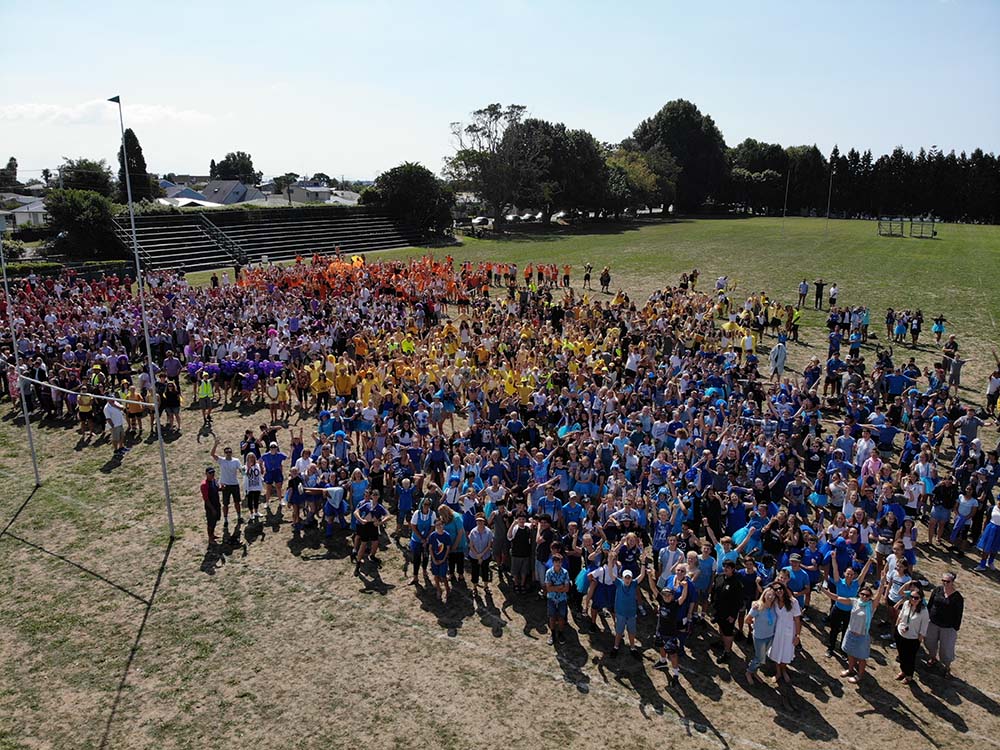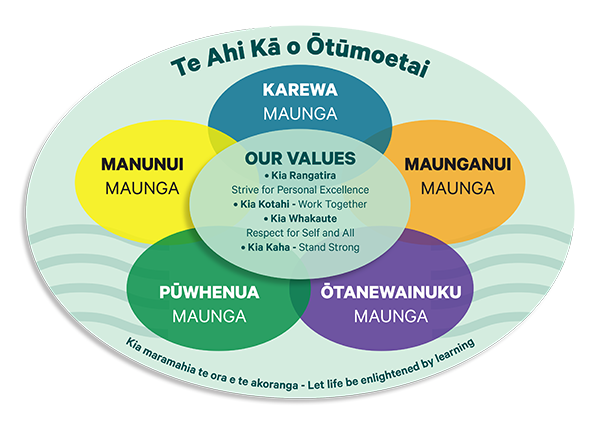Maunga/House System
Maunga/House System
Our goal is to align the maunga (mountain) characteristics with our school values. As our understanding of what each maunga could be, it is our hope that these learnings will be transplanted back into the classroom.
A house system was first introduced to Ōtūmoetai College in 1965. The houses were named Green, Red, Yellow and Blue. In 1966 the Houses changed names, Green became Bell (named after the first Board Chairperson), Red became Mitchell (named after a foundation Board member and Tauranga mayor), Yellow became Walsh (named after the local member of Parliament), and Blue became Webber (named after the foundation Principal). This house system was retired in 1972.
In 2019 we trialled a vertical whare / house system for our Year 9 and then Year 9 and 10 cohorts in 2020. The purpose of this trial was to increase our students’ sense of belonging and inclusion. Due to the success of this trial, we decided to fully adopt a whare system as from 2021.
All form classes have been assigned a Whare. At the end of 2020, two Year 13 student leaders and a staff leader were appointed to lead each Whare by running Whare assemblies, organising their respective Whare for competitions, and growing Whare spirit. They will be aided in this by their Whare committee, which is of two students from each year level.
The initial process of choosing names and colours for the Whare was largely student-driven. Tauira elected to name the Whare after local maunga, as they believed that the metaphor of a mountain aligned with the school value of ‘standing strong.’
The name of the maunga are Maunga Ōtanewainuku, Maunga Pūwhenua, Maunga Maunganui, Maunga Manunui, and Maunga Karewa. These prominent local maunga (mountains) frame the Ngai Tamarawaho (our local hapu) rohe (region).
The names of the Maunga leaders are as follows:

Why a Maunga System?
The purpose of the Maunga system is as follows:
- To increase connection and collaboration between Year groups and therefore encourage a greater sense of belonging and connection to our kura.
- To introduce greater competition within school and thus encourage greater participation in sporting, performing arts, cultural and other extra-curricular pursuits.
- To inject a sense of fun into school life and add activities that students can participate in during form times and break times.

